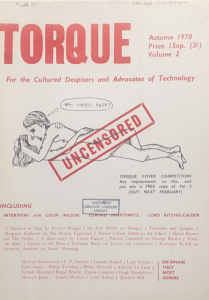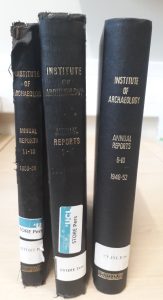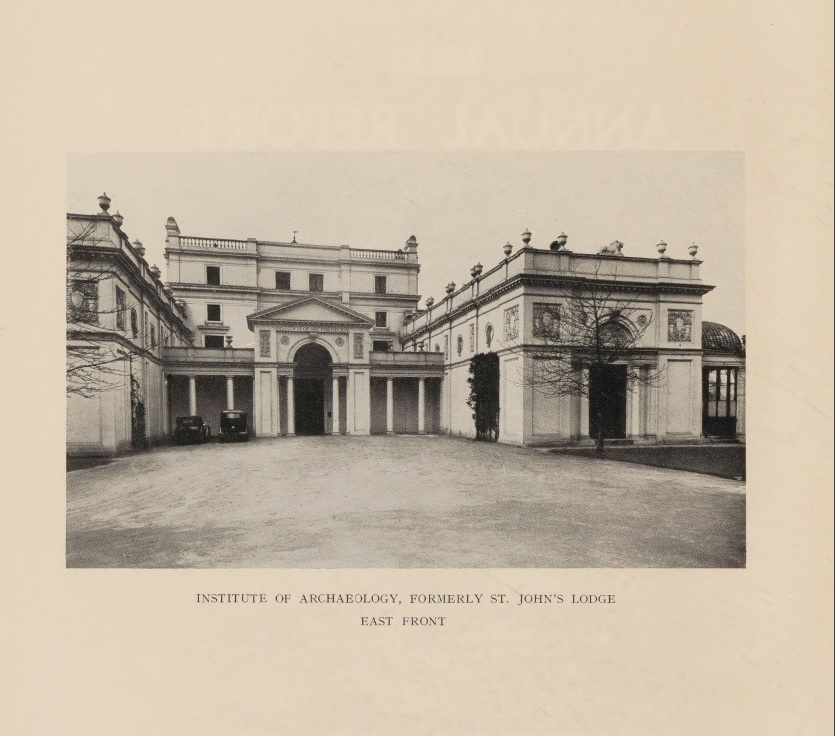French Protestants became one of the largest group of immigrants in England from the 16th to the 18th century. A small number of refugees started arriving from the 1520s onwards, especially during periods when persecution increased in France. Emigration began to decrease at the beginning of the 17th century thanks to more favourable conditions for Huguenots in their own country after the promulgation of the Edict of Nantes, but then increased again during the dragonnades, which started in 1681, and peaked in 1685 with the Edict of Fontainebleau. The latter, which effectively revoked the 1598 Edict, stipulated that all Huguenot ministers were to be expelled and that the laity had to convert to Catholicism and was furthermore forbidden to leave the country. Nevertheless, c. 40-50,000 French Protestants fled to England but for the most part had to leave all their belongings behind and therefore, many arrived entirely destitute. It soon became clear that substantial aid would need to be dispensed.
James II initially ordered collections to be carried out in Anglican churches for the benefit of Huguenots between 1686 and 1688. The first brief was issued on 5 March 1686 and originated from a petition by the Ministers and churchwardens of the Savoy French Church. The King intended the collection to be for the relief of Huguenots conforming to the Church of England only. Indeed, the potential applicants had to show certificates of having received communion according to the Church of England’s practices. A second brief was issued in 1688 but crucially did not mention that Huguenots had to conform in order to be considered.
A more structured way of providing for the refugees directly from funds from the Civil List was then created by joint monarchs William and Mary, in 1689: The Royal Bounty. On 5 May 1689, William III issued a declaration encouraging Huguenots to make their way to England and promised them protection and support. Responsibility for administering the funds was given to a number of eminent Englishmen, called the Commissioners, and to a French Committee. The Commissioners were appointed directly by the King and were responsible for overseeing the entire operation. On the other hand, the French Committee was composed entirely of Huguenots who had to decide who would get financial assistance and then allocate the money accordingly. From 1696, the distribution was split between the laity and the clergy, represented by two distinct committees. In 1705, the English Committee was set up and its members, nominated by the Commissioners, were tasked with auditing the accounts. These were deposited in the Chamber of London, at Guildhall.
Outside of London, distributions to the poor were carried out by the Huguenot churches, who received block grants, whereas other categories of recipients, such as the nobility and the bourgeoisie, had to apply directly to London. In the capital, two companies were set up to achieve the same aim: one in the City and one in Westminster. Below are two petitions from the French Hospital collection mentioning that both individuals were reliant on the Royal Bounty or bénéficence royale, prior to applying to live in the Hospital.

André Morelon’s petition to the French Hospital, 1783-1785

Catherine Lambert’s petition
to the French Hospital, 1783-1785
The papers housed in the Huguenot Library are those of the French Committee. The largest group of manuscripts are the certified accounts which were kept meticulously and list all those receiving funds as well as the respective amounts. They were divided into several categories differentiating the various persons receiving aid and/or the reasons why they needed it. Categories would include, amongst others, funds for the nobility, clergy, country churches, bourgeoisie and those of the lower classes. The amounts allocated to each category was decided in advance with the higher classes, incongruously from a modern viewpoint, receiving the most funds.

Schedule of the payments, under various
heads, authorized for the relief of poor
refugees for 6 months, 8 December 1699
Funds were not just distributed to individuals but sometimes also earmarked for a specific purpose, such as payments for funerals, emigration to colonies in the West Indies, establishment of apprenticeships and payment for Huguenots who looked after French Protestant orphans. They were also providing aid to Huguenot organisations such as schools for refugee children and the Pest House, the precursor of the French Hospital, located near Bunhill Fields.

Undertakers’ bill for interments,
November 1753-July 1760

Receipt for money and clothing for orphans by order of the Church of St Martin Orgars, 1735
In 1802, the Treasury, which had become responsible for issuing payments for the Royal Bounty, began to question the Committee more rigorously, with the intention of eventually winding up the funds. The gradual extinction of the pensions paid concluded in 1876, when the last payment was made to one Sarah Rignon.
The importance of this collection is not limited to the story of the grant itself, its organisation, distribution and the challenges it faced, but also derives from the detailed information it provides on the individual recipients: their family unit, original provenance in France, occupation and possible health conditions. Finally, it documents to some extent the running and activities of the French Churches involved in the distribution, as well as giving us a snapshot of part of the Huguenot community in England during this period. It can be argued that the Royal Bounty was instrumental in helping Huguenots to assimilate and in some cases prosper in England.
The Huguenot Society decided to digitise the microfiches of this entire collection and make them available on the members’ area of the Society’s website, which can also be accessed by UCL staff and students, upon request.
The project was approved in May 2019, and went live a year later. The digitisation of the 646 fiches, consisting of 12 x 5 images each was outsourced; whereas the creation of a searchable catalogue to which the images of the manuscripts would be attached was done in-house. The resulting resource has not only made this collection more accessible, especially during the various lockdowns, but has also substantially improved its cataloguing, as records for each constituent item had to be created. In turn, this benefits those who prefer to still visit and see the original documents.
If you would like to access the Royal Bounty archive online or would like to visit the library, please contact the Huguenot Library at: library@huguenotsociety.org.uk
By Micol Barengo
Further reading:
Escot, Margaret M., ‘Profiles of relief: Royal Bounty grants to Huguenot refugees, 1686-1709’ in Proceedings of the Huguenot Society, vol. 25, issue 3 (1991)
Rey, Claudius, An account of the cruel persecutions rais’d by the French clergy since their taking sanctuary here… (London: Printed for J. Roberts, 1718)
Smith, Raymond, Records of the Royal Bounty and connected funds, the Burn donation, and the Savoy Church in the Huguenot Library. Quarto Series volume 51 (London: Huguenot Society of Great Britain and Ireland, 1974)
Smith, Raymond, ‘Financial aid to French Protestant refugees 1681-1727: Briefs and the Royal Bounty’ in Proceedings of the Huguenot Society, vol. 22, issue 3 (1973)
Sundstrom, Roy A., Aid and assimilation: a study of the economic support given French Protestants in England, 1680-1727 (PhD Thesis: Kent State University Graduate School, 1972)

 Close
Close


































